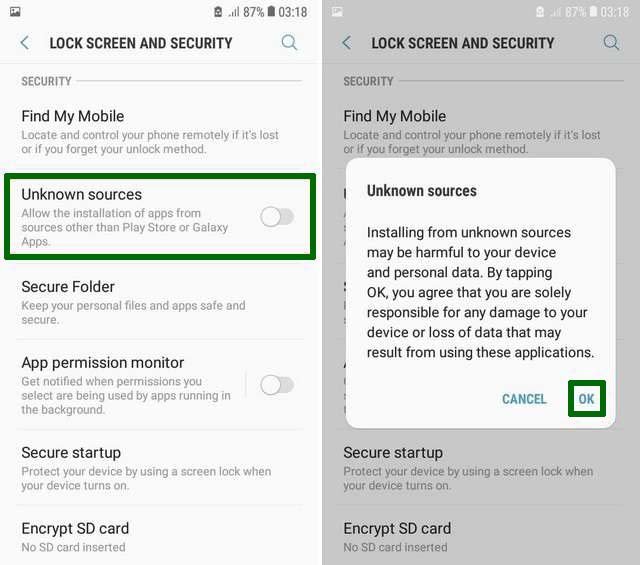I will introduce the concept of 3D printing and its increasing popularity in various industries and among hobbyists. I will mention the versatility and potential of 3D printing technology.
What is a 3D Printer?
Please explain the basic concept of 3D printing, including how it works and the types of objects that it can create.
Types of 3D Printers
Discuss the main types of 3D printers available, such as FDM (Fused Deposition Modeling), SLA (Stereolithography), and SLS (Selective Laser Sintering), and highlight their differences in terms of technology, cost, and applications.
Key Considerations When Choosing a 3D Printer
- Print Quality
- Build Volume
- Filament Compatibility
- Ease of Use
- Support and Community
- Price
Popular 3D Printers on the Market
- Creality Ender 3 V2
- Anycubic i3 Mega
- Prusa Mini
- Artillery Sidewinder X1
You can find the best budget 3D printer that suits your specific needs and budget constraints. Generally, people regard a few options for their affordability and performance.
Read more: Nuclear Batteries Are Coming To The Market! Once Charged, The Phone Will Last 50 Years!
Nuclear Batteries Are Coming To The Market! Once Charged, The Phone Will Last 50 Years!
Best Budget 3D Printer 2024
1. Creality Ender 3 V2

Beginners and hobbyists prefer this due to its ease of use and relatively low price. It has a build volume of 220 x 220 x 250 mm and includes features such as a heated bed and improved stability compared to its predecessor.
The Creality Ender 3 V2, an upgraded version of the popular Creality Ender 3, is known for its affordability and reliability. Here are some key details about the Ender 3 V2:
- Build Volume: The Ender 3 V2 provides a build volume of 220 x 220 x 250 mm, which is suitable for printing a variety of objects, including small to medium-sized models.
- Frame: Its predecessor is compared to it for improved stability and durability with an integrated, all-metal frame.
- Bed Leveling: The new, improved bed leveling system comes with the Ender 3 V2. It includes a manual bed leveling knob and an upgraded bed leveling system that makes leveling the bed more stable and easier.
- Display: The printer settings can be easily navigated and controlled through a 4.3-inch color touchscreen display.
- Extruder: The new, improved extruder design that comes with the printer reduces the risk of clogging and improves filament feed consistency.
- Silent Printing: The silent motherboard in the Ender 3 V2 reduces the noise produced during printing, making it suitable for home and office environments.
- Filament Sensor: The filament sensor includes a filament sensor that detects when the filament is running out and pauses the print job, allowing you to reload filament and resume printing.
- Compatibility: You have flexibility in your printing materials as the Ender 3 V2 is compatible with a wide range of filaments, including PLA, ABS, PETG, and more.
Here’s a pros and cons table for the Creality Ender 3 V2:
| Pros | Cons |
|---|---|
| Affordable | Manual bed leveling can be time-consuming |
| Large build volume | Some assembly required, not fully assembled |
| Upgraded all-metal frame | Limited customer support compared to more expensive models |
| Improved bed leveling system | No auto bed leveling |
| Silent motherboard for quiet operation | Limited filament compatibility |
| Filament sensor for print resume function | Some users report issues with quality control |
| Color touchscreen display |
2. Anycubic i3 Mega

The Anycubic i3 Mega, another solid option in the budget range, offers a large build volume of 210 x 210 x 205 mm and features like a touchscreen interface and heated bed. People know it for its reliability and ease of assembly.
People consider the Anycubic i3 Mega a popular desktop 3D printer known for its reliability and ease of use. Here are some key details about the Anycubic i3 Mega:
- Build Volume: The Anycubic i3 Mega allows you to print medium-sized objects with ease, offering a generous build volume of 210 x 210 x 205 mm.
- Sturdy Frame: The rigid metal frame features stability during printing, resulting in more accurate and consistent prints.
- Touchscreen Display: The user-friendly touchscreen display allows users to easily navigate the printer settings and controls.
- Filament Sensor: The Anycubic i3 Mega has a filament sensor that detects when the filament is running out and pauses the print job, enabling you to reload filament and resume printing without wasting material.
- Easy Assembly: Compared to some other models, assembling the printer is relatively easy, and it comes with detailed instructions to guide you through the process.
- Heated Bed: The heated bed features prevent warping and adhesion issues, especially when printing with materials like ABS.
- Print Quality: The Anycubic i3 Mega is known for producing detailed and precise prints with relatively low noise levels, and it has a high print quality.
- Compatibility: You have flexibility in your choice of printing materials as it is compatible with a wide range of filaments, including PLA, ABS, TPU, and PETG.
Here’s a pros and cons table for the Anycubic i3 Mega:
| Pros | Cons |
|---|---|
| Large build volume | Manual bed leveling can be time-consuming |
| Sturdy metal frame | Some users report issues with quality control |
| User-friendly touchscreen display | Limited customer support compared to more expensive models |
| Filament sensor for print resume function | No auto bed leveling |
| Heated bed for improved print quality | Some assembly required, not fully assembled |
| Wide filament compatibility | |
| Relatively quiet operation |
3. Prusa Mini

The Prusa Mini, although slightly higher in price compared to some other budget options, is still considered affordable and offers excellent print quality and reliability. It has a smaller build volume of 180 x 180 x 180 mm but includes features like automatic bed leveling and a robust community for support.
Prusa Research, known for its high-quality printers, manufactures the Prusa Mini, a compact and affordable 3D printer. Here are some key details about the Prusa Mini:
- Build Volume: The Prusa Mini has a build volume of 180 x 180 x 180 mm, which is smaller than some other models but still suitable for a wide range of prints.
- Automatic Bed Leveling: The Prusa Mini has a standout feature, its automatic bed leveling system, which ensures that the print bed is perfectly leveled for each print and leads to improved print quality and reliability.
- Removable Magnetic Bed: The printer has a removable magnetic bed, which allows users to easily remove prints once they finish and helps prevent damage to the print bed.
- Filament Sensor: The filament sensor equipped in it detects when the filament is running out and pauses the print job, allowing you to reload filament and resume printing without wasting material.
- Quiet Operation: The Prusa Mini is known for its quiet operation, which makes it suitable for using in home or office environments without causing too much noise.
- Print Quality: Thanks to its precise motion system and high-quality components, the printer produces high-quality prints with fine details and smooth surfaces.
- Ease of Use: The Prusa Mini designs itself to be user-friendly, providing a simple interface and easy-to-follow instructions, which make it suitable for beginners and experienced users alike.
- Community and Support: The users of Prusa Research have a large and active community that provides support, tips, and advice, making it easier for them to troubleshoot any issues that may arise.
Here’s a pros and cons table for the Prusa Mini:
| Pros | Cons |
|---|---|
| Automatic bed leveling | Smaller build volume compared to some other models |
| Removable magnetic bed | Limited to PrusaSlicer software for optimal performance |
| Filament sensor for print resume function | Some users report occasional issues with extruder jams |
| Quiet operation | Limited customer support compared to more expensive models |
| High-quality prints | Assembly required, not fully assembled |
| User-friendly interface |
4. Artillery Sidewinder X1

This printer has a larger build volume of 300 x 300 x 400 mm and includes features such as a direct drive extruder and silent stepper motor drivers. People know it for its fast printing speeds and overall good value for its price.
The Artillery Sidewinder X1 is a large-format 3D printer that people know for its speed, reliability, and relatively low price compared to other printers with similar features. Here are some key details about the Artillery Sidewinder X1:
- Build Volume: You can print relatively large objects or multiple smaller objects in a single print with the Sidewinder X1, which offers a large build volume of 300 x 300 x 400 mm.
- Direct Drive Extruder: The direct drive extruder features improve print quality, especially when using flexible filaments like TPU.
- Silent Stepper Motor Drivers: The printer employs silent stepper motor drivers, which decrease the noise produced during printing, making it suitable for use in home or office environments.
- Touchscreen Display: The Sidewinder X1 has a touchscreen display that allows users to easily navigate the printer settings and controls.
- Dual Z-axis: The dual Z-axis design ensures stable and accurate prints, especially on taller objects.
- Filament Runout Sensor: The filament runout sensor equipped on the printer detects when the filament is running out and pauses the print job, allowing you to reload filament and resume printing without wasting material.
- Print Quality: Thanks to its precise motion system and high-quality components, the Sidewinder X1 can produce high-quality prints with fine details and smooth surfaces.
- Compatibility: You have flexibility in your choice of printing materials as it is compatible with a wide range of filaments, including PLA, ABS, TPU, and PETG.
Here’s a pros and cons table for the Artillery Sidewinder X1:
| Pros | Cons |
|---|---|
| Large build volume | Some users report issues with customer support |
| Direct drive extruder | Assembly required, not fully assembled |
| Silent stepper motor drivers | Firmware updates may be required for optimal performance |
| Touchscreen display | |
| Dual Z-axis for stability | |
| Filament runout sensor | |
| Wide filament compatibility | |
| High-quality prints |
Frequently Asked Questions About 3D Printers
How does a 3D printer work?
Most 3D printers use a process called additive manufacturing, where material is deposited layer by layer to create a 3D object based on a digital design.
What materials can be used in a 3D printer?
Common materials used in 3D printing include plastics (such as PLA and ABS), resins, metals, and ceramics.
What can I make with a 3D printer?
You can create a wide range of objects with a 3D printer, including prototypes, toys, jewelry, replacement parts, and even medical implants.
How long does it take to 3D print an object?
The time it takes to 3D print an object depends on its size, complexity, and the settings of the printer. Small objects can take a few hours, while larger or more intricate objects can take several days.
Are 3D printers expensive?
The cost of a 3D printer can vary widely depending on its quality and capabilities. Entry-level 3D printers can cost as little as a few hundred dollars, while industrial-grade printers can cost tens of thousands of dollars.
What software do I need to create 3D models for printing?
There are many software options for creating 3D models, including free programs like Tinkercad and Blender, as well as professional software like Autodesk Fusion 360 and SolidWorks.
Can I 3D print using recycled materials?
Some 3D printers are capable of using recycled materials, such as recycled plastics, to create new objects. This can be a more sustainable option for 3D printing.
Are 3D printers safe to use?
When used properly, 3D printers are generally safe. However, it's important to follow safety guidelines, such as using the printer in a well-ventilated area and avoiding contact with hot or moving parts.
Can I sell objects I 3D print?
Yes, you can sell objects you 3D print, but you should be aware of any legal issues, such as copyright infringement, that may arise from selling objects based on someone else's designs.
































